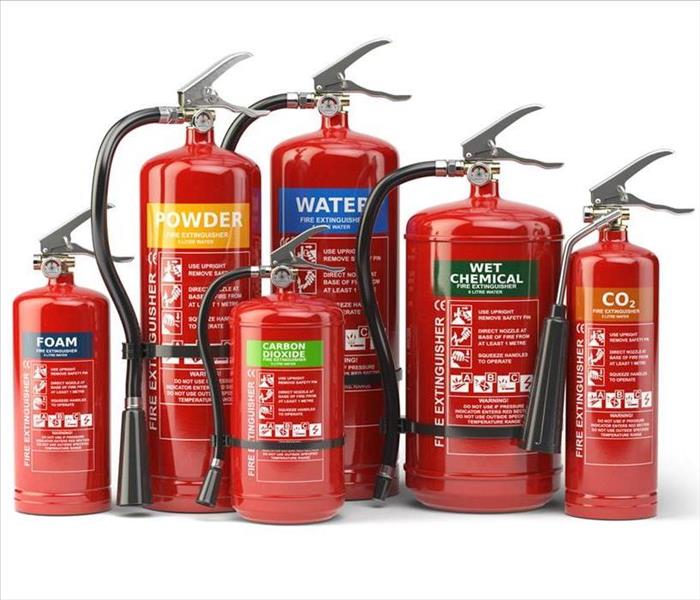Exploring the Different Types of Fire Extinguishers
4/8/2021 (Permalink)
Types Of Fire Extinguishers
Responsible homeownership means having an insurance policy that covers damages to your house and its contents due to a fire. Usually, entities with a financial interest in your house, such as a mortgage company will require borrowers to carry this coverage, including properties in Flourtown, PA. Being a good homeowner also means staying on top of fire preparedness. This includes being careful about the use of open flames in your property. It also means having the means to put out or control a blaze, such as having a sprinkler system that operates when a home fire is detected. Keeping a fire extinguisher in various rooms is also part of a complete plan, but not all types are created equal. Here’s what you should know.
Taking a Closer Look at Extinguishers
Extinguishers come in three different classifications based on effectiveness against a type of blaze. Class A refers to fires caused by trash, wood and paper. Class B includes fires started by flammable liquids, while class C is for blazes caused by live electricity. Each fire extinguisher has a label with the classification and a number that corresponds to the device’s effectiveness. Extinguishers come in different sizes that correspond to usage:
Stove-top: Ideal for mounting above a range or oven
2-pound: Good for use in a vehicle
5-pound: Easily accessible in a kitchen or utility room
10-pound: Best for garages or workshops where a blaze can rapidly spread
Taking Care
It’s important to make sure that these fire defense items are stored properly. Should a home fire occur, you don’t want to learn that the extinguisher is not where you need it or has lost pressure. Extinguishers should be replaced or refilled after a single-use.
While you never hope to experience a home fire, you should be knowledgeable of what to do in advance. Professional fire remediation experts can help restore your home to pre-damage conditions, but proper use of a fire extinguisher can reduce overall damage. It can minimize the time it takes to repair your home.





 24/7 Emergency Service
24/7 Emergency Service
